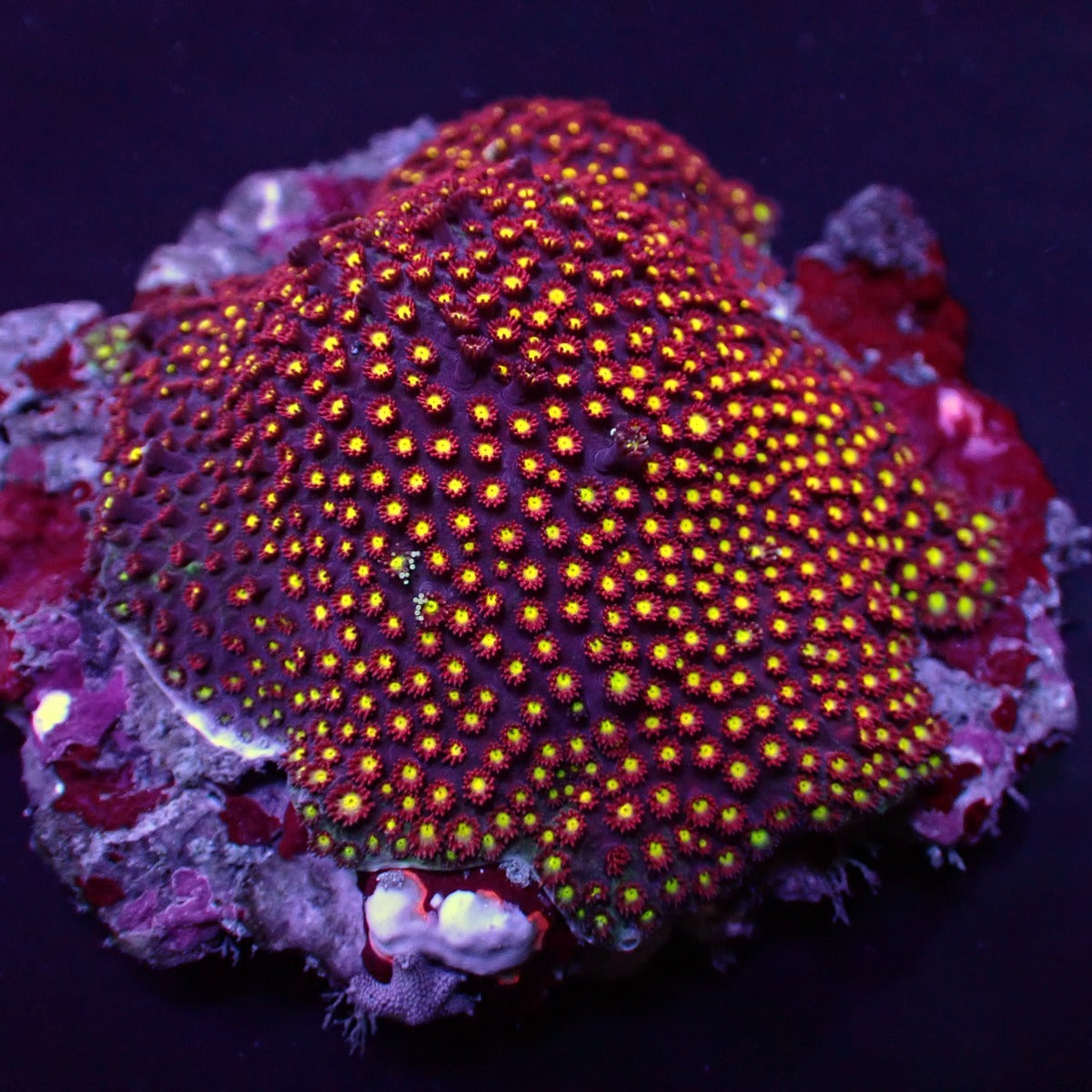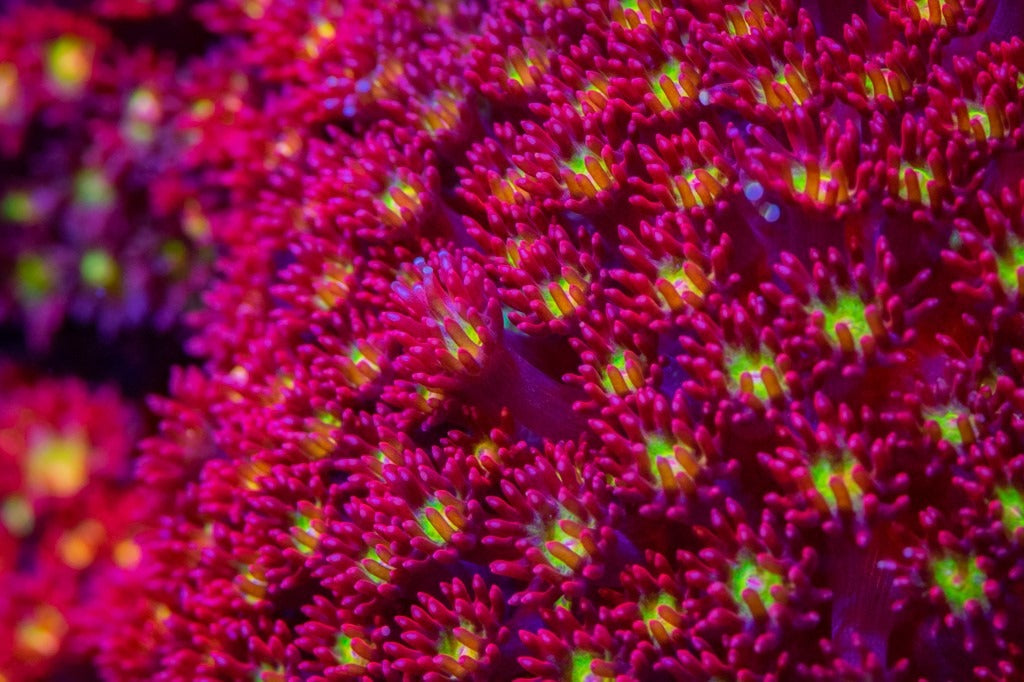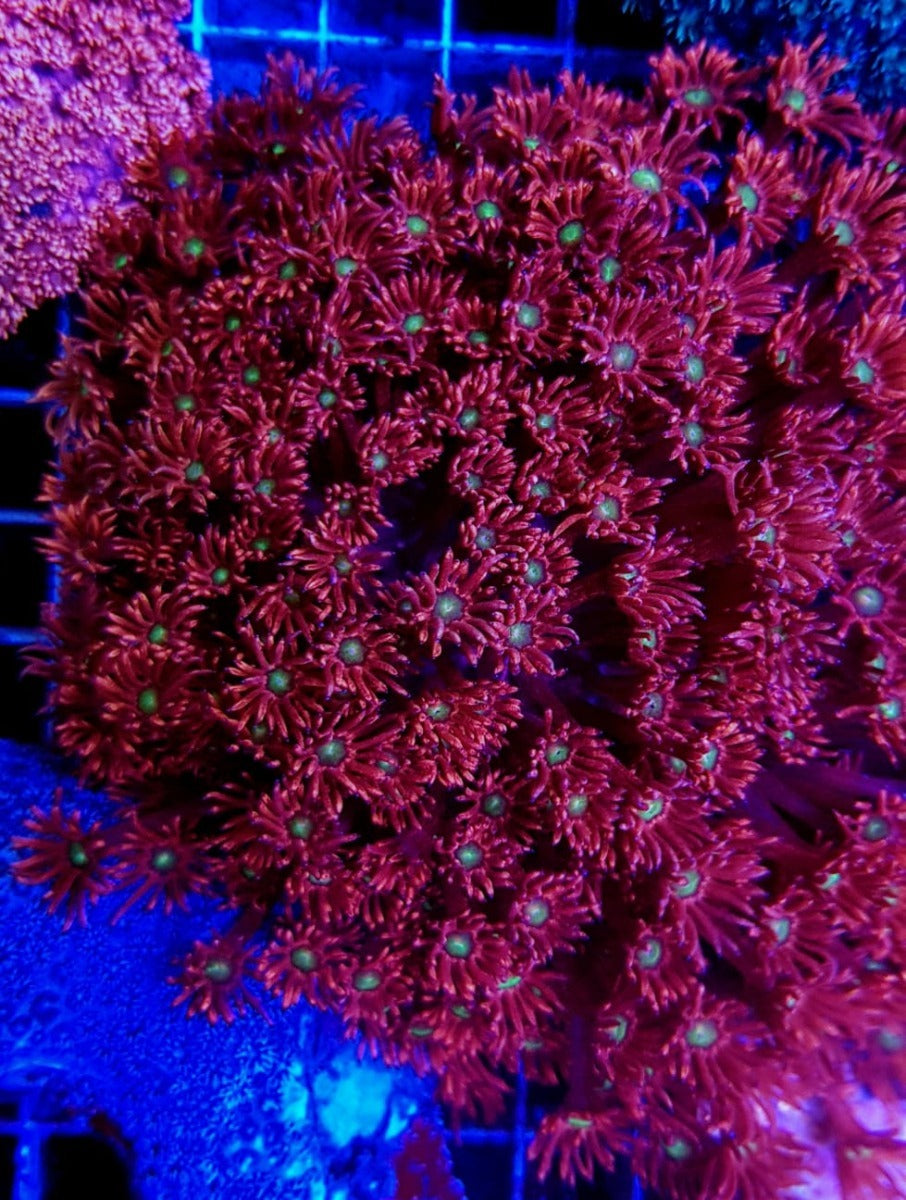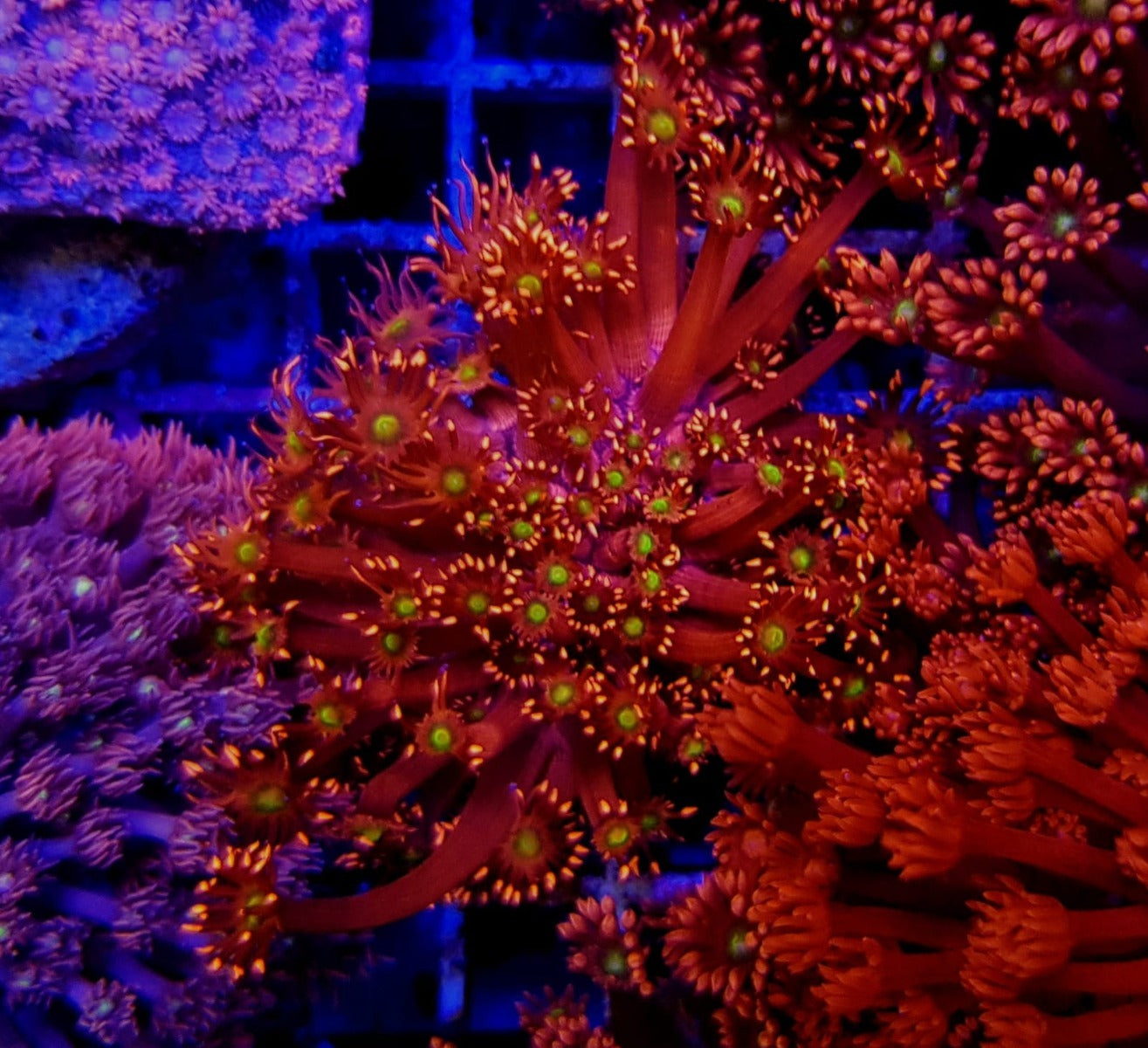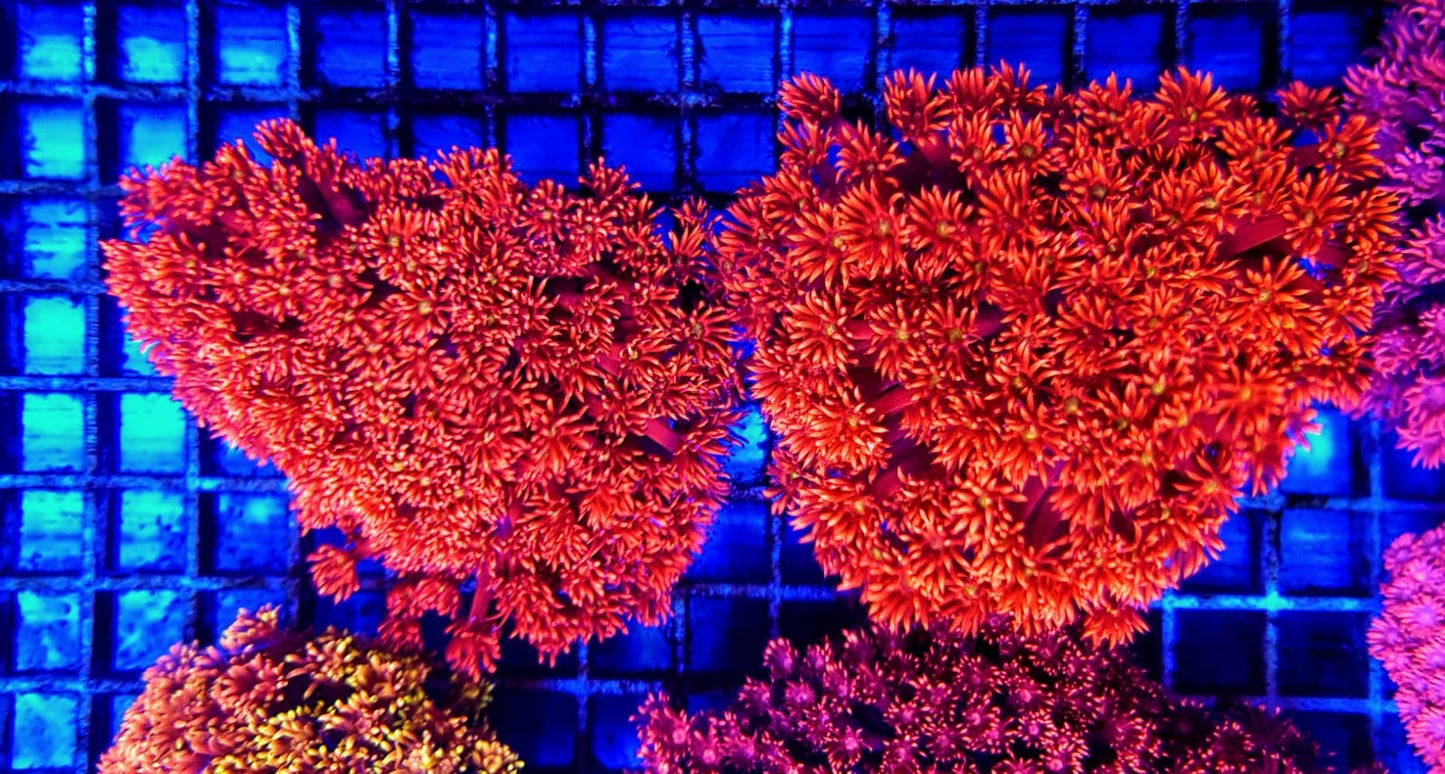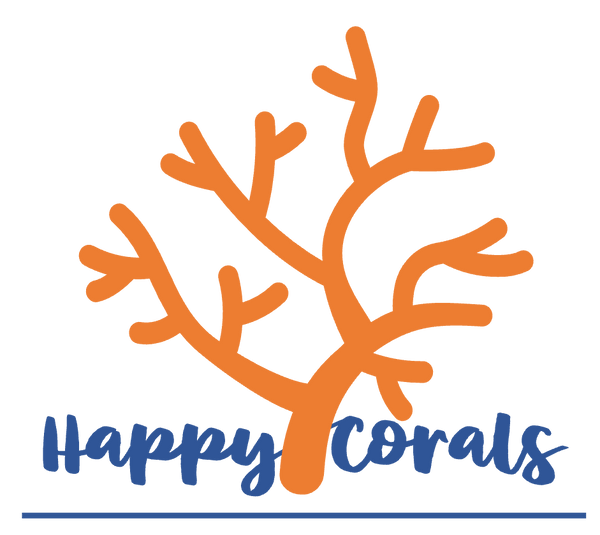Coralreef Store
Goniopora spp. (Red-Yellow-Green Center)
Goniopora spp. (Red-Yellow-Green Center)
Couldn't load pickup availability
- Indo-Pacific
- High Care Level
- For Advanced Hobbyists
- Low to Moderate Placement in Reef Tank
Goniopora spp., also known as Flower Coral, is a visually striking species of coral from the Indo-Pacific region, known for its large, fleshy polyps that resemble flower petals. These corals can come in various colors, including pink, green, purple, yellow, and sometimes even a combination, with the polyps extending outward, creating a flower-like appearance. Goniopora is a relatively slow-growing species and requires a high level of care due to its sensitivity to water quality and other environmental conditions. It’s better suited for experienced aquarists who are comfortable managing a reef tank with stable conditions.
This species grows in branching forms and can become quite large under optimal conditions. It is a filter feeder, drawing nutrients from plankton and particulate matter in the water, and it has an impressive feeding response when appropriately fed.
Placement in the Tank
Goniopora spp. prefers moderate to low lighting, as too much intense light can cause the polyps to retract or bleach. The ideal lighting intensity should range between 100-200 PAR (Photosynthetically Active Radiation). Placing the coral on the substrate or at the lower sections of the rockwork in the aquarium, where indirect lighting is available, will often yield the best results. It should be kept away from areas of the tank with high-intensity light, as exposure to excessive direct light may cause stress.
As for water flow, Goniopora spp. thrives in moderate to gentle water movement. Strong currents can physically damage the coral and retract its polyps, while slow or stagnant flow can negatively impact its feeding efficiency and nutrient intake. A water flow of 10-20 tank volumes per hour is ideal for Goniopora.
Water Parameters
Goniopora spp. is highly sensitive to fluctuating water conditions. Maintaining precise and stable water parameters is essential for its health and long-term success. Here are the recommended and more specific water parameters:
- Temperature: 24°C to 28°C (75°F to 82°F). Ideally, it should be maintained at a consistent 26°C (79°F) to 27°C (80.6°F) to prevent stress. Temperatures outside of this range can weaken the coral’s immune system, leading to susceptibility to diseases and bleaching.
- Salinity: 1.023–1.025 specific gravity (SG). Maintaining salinity at a consistent 1.024 will support stable coral health. Significant shifts in salinity can affect osmoregulation and hinder growth.
- pH: 8.0 to 8.4, with an optimal range of 8.2. Consistency in pH is essential for proper calcium absorption. Rapid fluctuations in pH can cause stress, resulting in retraction or even death.
- Alkalinity (dKH): 8-12 dKH. A target range of 9-10 dKH is ideal for Goniopora, as this helps maintain stable pH levels and supports the coral’s skeletal growth.
- Calcium: 420-450 ppm. Calcium is crucial for the formation of the coral’s skeleton. For optimal skeletal development, a target value of 430 ppm is recommended.
- Magnesium: 1250-1350 ppm. Magnesium helps stabilize calcium and alkalinity, so it should be maintained in this range to prevent calcium precipitation and to support overall coral health.
- Nitrate: Less than 5 ppm. Goniopora spp. is extremely sensitive to nitrate buildup. Excessive nitrates can result in poor health, stunted growth, and increased susceptibility to pests.
- Phosphate: Below 0.03 ppm. Elevated phosphate levels fuel unwanted algae growth, which can smother the coral and compete for nutrients. Keeping phosphate levels under this threshold is crucial for its well-being.
- Salinity Stability: Any significant fluctuations in salinity can cause stress, so maintaining a consistent level within the recommended range (1.023–1.025) is critical.
Feeding
Goniopora spp. is a filter feeder that relies on capturing plankton and organic material suspended in the water. While it may get some nutrition from photosynthesis (due to its symbiotic zooxanthellae), the coral benefits from supplemental feeding to promote healthy growth and vibrant polyps.
Feed Goniopora with liquid coral food, plankton (such as rotifers or copepods), or finely chopped meaty foods like brine shrimp. This can be done a few times a week, ensuring not to overfeed. Overfeeding can lead to nutrient spikes and increased organic waste, which will degrade water quality. Targeting feedings at night when the polyps open fully is often beneficial. Goniopora spp. responds well to small, frequent feedings, which mimic natural conditions where it feeds on tiny organisms.
Maintenance and Care
Maintaining Goniopora spp. requires attention to detail and a commitment to water quality management. Here’s how to keep this coral healthy:
- Water Changes: Regular water changes (10-15% weekly) are crucial to prevent the accumulation of toxins and nutrients in the aquarium. This will help maintain the stable conditions needed for Goniopora to thrive.
- Water Parameter Monitoring: Regularly test for parameters such as pH, temperature, alkalinity, calcium, and nitrate levels. Keeping a tight control on water conditions will help prevent stress and enhance coral health.
- Pruning: While Goniopora spp. doesn’t require frequent pruning, it may need occasional trimming if it becomes too large and overgrows its space. If pruning is necessary, do so carefully to avoid damaging the delicate polyps.
- Pest Control: Goniopora spp. can be susceptible to pests such as flatworms, nudibranchs, and aiptasia. Regularly inspect the coral for signs of damage, such as discoloration or retraction of polyps, and take immediate action to treat pests.
Compatibility
Goniopora spp. is relatively peaceful but needs its own space to thrive. Keep it away from aggressive corals, especially those with long or stinging tentacles like certain LPS or SPS species, as these can harm or overwhelm Goniopora. It is important to allow Goniopora to spread without competition for space and light.
In terms of placement, avoid direct contact with other corals, as Goniopora may exhibit territorial behavior and sting neighboring species. It can be safely housed with other peaceful corals, such as other soft corals or some LPS species, as long as they are not overly aggressive.
Conclusion
Goniopora spp. is a beautiful and fascinating coral, but it requires careful attention to water quality and environmental stability. For advanced hobbyists, it can be a rewarding addition to the reef tank when provided with optimal conditions, regular monitoring, and appropriate feeding. By ensuring a stable environment with specific water parameters, Goniopora can grow into a stunning specimen, with its polyps creating a captivating and vibrant display.
Share

